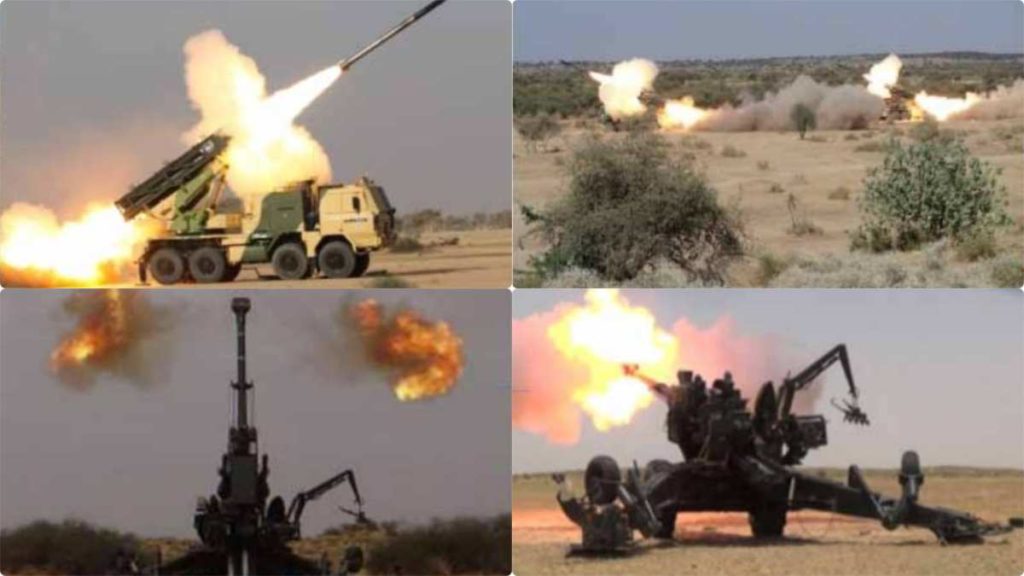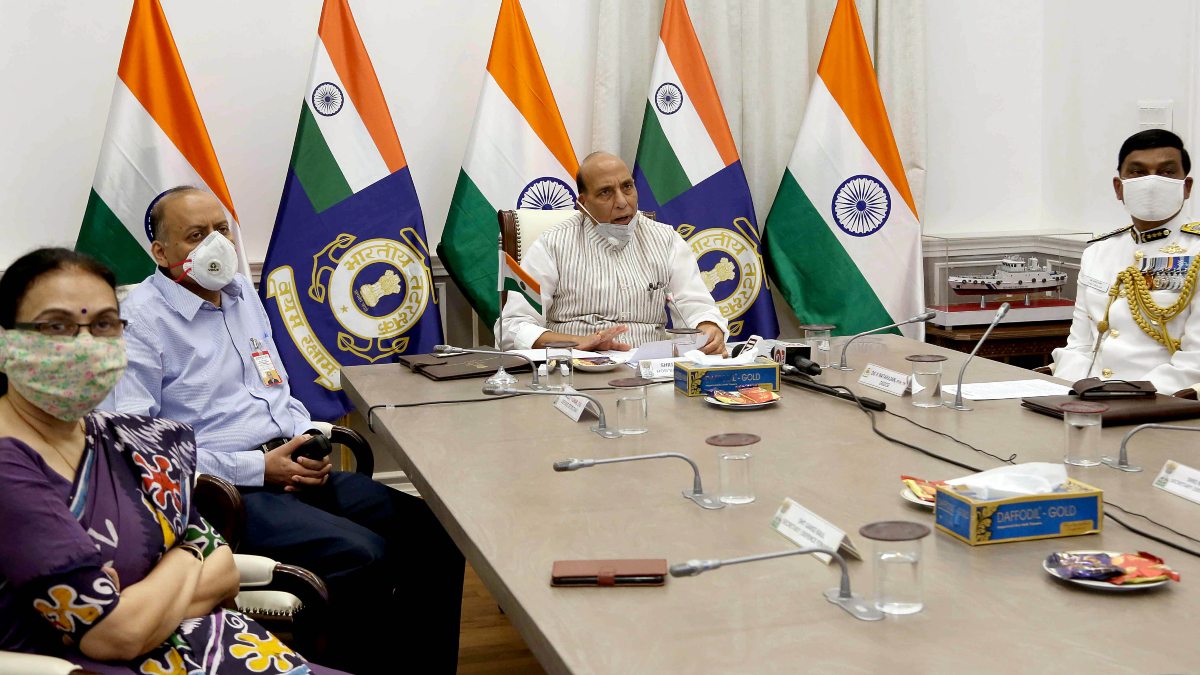“Aatmanirbharta (indigenisation) is the only route to strategic independence.”
To attain great power status India must strengthen its internationally identified weak link—defence procurement. In the current environment we either indigenise or remain a soft power. The CDS recently made statements to the effect: “Boost ‘Make in India’. Give opportunity and hand-hold domestic industry to deliver cuttingedge technology. Initially accept weapons with 70% GSQRs. Formulate GSQRS on acceptable and desirable requirements, give a plus minus leeway. Be flexible while not compromising on performance. Need to promote domestic defence manufacturing and reduce imports.” All this was later emphasised by our Finance Minister. It appeared that GSQRs are the main culprits and armed forces do not hold the hand of indigenous defence industry.

GSQRS
Let us examine GSQRs first. There are 15-30 layers to penetrate before a GSQR/ JSQR/PSQR is finalised. Each layer gives its input to justify its existence. It complicates and stiffens GSQRs to kill flexibility and enhance unattainability. Further, vested interests attempt to modify QRs to suit their ends or eliminate competition like in the Augusta Westland case. Vendors make tall claims during post-RFI interactions. Later they cannot deliver. Weapons based on a new QR get finally acquired after a decade. Hence, vision and knowledge are important. That is not institutionally available in India. Overambition is normal like the QR of a replaceable barrel for a rifle. Sufficient leeway and flexibility in QRs are available only in the developmental route via the DRDO. However that route has many pitfalls despite best potential. The whole thing needs greater thought.
Indigenisation efforts
Development of Pinaka MBRL commenced in 1987 with a QR of 45km range, based on 1960s vintage technology of USSR. After meandering for 23 years, Army, DRDO, OFB, L&T and TATAs came up with a system. It was inducted into the Army in 2010. Range: 37.5 km! What if the range was 7.5 km short? It was indigenous, fully supported and accepted. The system stabilised. An extended range (55 km) version was quickly developed. It was inaccurate. Hence in an out of the box solution a guidance system was incorporated in 2016. Within a year initial trials were carried out successfully with a range of 70 km and outstanding accuracy. The investment paid off. As further trials continued, production facilities should have been set up in parallel. If parallel production had been set up, by now some of the critical Chinese facilities in Ladakh would be in reach including parts of the Western Highway. The Guided Pinaka increases range and precision. It enhances firepower tremendously. It has potential for 30% range enhancement. It has a plethora of warheads. It offsets the gap in depletion of aircraft in the IAF. Completely indigenous. It has deterrent value. This is what Pakistan says: “Pinaka is an artillery missile system capable of destroying 900 square metres at a 20-80 kilometre range by firing a salvo of 12 rockets within 48 seconds. The Pinaka Mk-II rocket is modified as a missile by integrating with the navigation, control, and guidance system to improve the end accuracy and enhance the range. It is believed that the guided version of the Pinaka system is being developed to deliver nuclear warheads at short ranges” Clearly worried! However, four years back, we halved the number of regiments which were originally visualised. Even for the number of regiments sanctioned, orders are hanging fire. Force multiplication or force division?
The Dhanush 45 cal 155mm gun started off as a reverse engineered and upgraded Bofors. We realised more could be achieved, took the risk, and went big. A Weapon Development Team under a Brigadier was placed at GCF Jabalpur for constant interaction, input, and monitoring. The first gun was developed and fired. It went well. The OFB team kept asking for the QRs. I constantly refused. My logic: develop the gun, establish all parameters, and then make the QRs. The gun was put through all trials internally by Artillery. Once satisfied, the QRs were made. It could not fail. Ultimately Dhanush met all parameters during actual trials barring some minor ones. It was still cleared with some provisos but not stopped. After-all this was the first modern gun India was making in 30 years. Despite a major accident which rattled everyone, invoked widespread skepticism and vested interest calls to shut the project and go in for a reliable foreign gun, we continued. All hurdles were crossed. Uniquely, Dhanush was put through special trials with three guns in high altitude and three in plains. Thereafter six guns were used as a subunit. Literally speaking, Dhanush went through a trial by fire when cleared for production. Finally! India had a topline 155 mm Gun. Our future. However, the government started negotiating for a foreign gun! Dhanush was sidelined after 10 years of hard work! Even the OFB which had quoted Dhanush as a shining example of success dumped its own baby. “Aatmasamman” and “Aatmanirbharta” go hand in hand.
In 2000 it was decided that all new Guns would be 155mm guns. Existing 130mm guns were first upgraded to 155mm. Simultaneously, indigenous manufacture of ammunition commenced. It included modern Bi Modular Charge Systems (BMCS) as the propellant. We bought some BMCS through a global tender when a plant was being established at Nalanda through TOT. Scandals surfaced. Firms were blacklisted. The plant never got commissioned. Our stocks started depleting. We went in for a global tender with the old GSQR. Not a single OEM met the QRs! Ammunition levels continued dipping. It was suggested to dilute QRs to ensure we got some ammunition at least. I put my foot down. Inaccurate heavy artillery ammunition will invariably miss the target, fall short in range, and endanger own troops apart from wasted expenditures. Taboo! We re-tendered with the same QRs. An indigenous route was also opened. DRDO by new development and OFB by reverse engineering. The second-round tender and trials were successful. In the meanwhile OFB and DRDO came up with BMCS which were 80% ok. 20 % missing with one was available with the other. Due to internecine animosity they would not share technology. We stepped in and virtually read out the riot act. The then Member OFB, Dir HEMRL and I, finally came to a mature understanding. An Artillery officer led committee forged a way forward. However the Nalanda Factory was still non-operational. So with some dedicated DRDO and OFB officers a hybrid solution to start producing BMCS at Nalanda evolved. That process has now stabilized. I understand that for the present, adequate amount of BMCS are available for the new 155mm guns being inducted. However the main plant remains dysfunctional even now. It needs to be operationalised. Otherwise it will impinge on operational effectiveness as more new guns are inducted. Ammunition!
Analysis
I could give half a dozen more examples. However, analyse these cases. There are many sides to this story. The sides differ for each story. They also reinforce the views of the FM and CDS. Equally the government needs to do a lot more if we are to truly indigenise. It will be argued that all these cases pertain to Artillery only. Agreed. In fact the Navy has a better model. So has air defence. Should successful models not be replicated elsewhere? Incompetent leadership or lack of knowledge, or both? To further elucidate, all Artillery programmes, if aggregated, and prioritised as per current operational requirements, and appropriated equitably to defense industry as per capability and capacity, all indigenous defense majors (public and private) will have assured orders for the next three decades and beyond. India will not be ever short of firepower. If this concept is expanded sensibly and transparently in a consultative manner, it will lead to a major revival to propel India to strategic Independence. Extend this concept to identified, measurable and benchmarked Import Substitution, Reverse Engineering and Upgradation projects and India will be at a different level. It needs Vision, Knowledge, and Innovation. Financial issues can be worked out if a virtuous cycle of confidence is injected. The government must get its act together if it means business. Holistic thinking needed.
Ground realities
Some fundamental overarching shifts have occurred in this pandemic period. These will be constants here after.
India’s role in world affairs is expanding. Its weight will increase only if it can indigenise defence.
Our rise is a direct threat to our adversaries. They will act in concert to put us down. “Aatmanirbharta” is the only answer.
Amidst the economic squeeze which is likely to last at least 5 years, imports are unaffordable.
India’s bureaucratic processoriented procurement needs an overhaul to promote timely outcomes. Our situation demands extraordinary responses.
There is an ongoing ‘Disruption in Military Affairs’ through concepts like “Multi-Domain Operations” and “Unrestricted Warfare”.
Manpower preponderance of Indian armed forces inhibits modernisation.
There are some ground realities. Armed forces that face the enemy and the politicians who face the country need weapons not bureaucracy or OFB or DRDO or industry. They need cases, indents, projects, and orders, respectively. Hence forces must assume leadership and control their destiny. Insist on it from the MoD. Everyone responds when Generals know their beans.
The CDS says, “You have to see what your threat and what kind of a weapon you should need…” Very correct. We need a national threat perception and a strategy to develop requisite capabilities. Hence a prioritised strategy based on threats, affordability, availability, alternate means, technology trend line, alliances, jointness and operational concepts is mandatory. Import Substitution, Reverse Engineering, Upgrading, and Innovation are part of the deal. The ‘ideal’ will never happen. Examine how Iran has done it. Eye opener.
The DPP has been amended a greater number of times than the weapon systems procured. The DPP is only a GO TO reference for procedure and rules. It has enough leeway to go around all hurdles. Let me confess. I never took the DPP seriously. Civil-military fusion in cyberspace, AI, telecom, space, nuclear, ISR, and Robotics should be the watchword. There is adequate technology and knowledge available in India. Microsoft, Amazon, Google, and many multinationals are tapping this knowledge daily. That knowledge will not come to South Block. It must be harnessed and harvested from grassroots. Do not treat the knowledge centres as another DRDO or OFB or DPSU. AI is one of the priority programmes of US Army Futures Command. It is being executed from Carnegie Mellon University and not Pentagon. There is a $3 billion lesson there.
Conclusion
After the recent reforms were announced, I attended a few webinars by industry bodies. I heard people saying the same old things. It did not bear results earlier. It cannot deliver under the current extraordinary times. Is the defence establishment reinforcing failure? India needs to do something different. Time for talking is over. Lt Gen P.R. Shankar was India’s DG Artillery. He is highly decorated and qualified with vast operational experience. He contributed significantly to the modernisation and indigenisation of Artillery. He is now a Professor in the Aerospace Dept of IIT Madras and is involved in applied research for defence technology.

